Customer retention is cheaper than acquisition.
For example, the success rate of selling to a new customer ranges between 5-20%.
Whereas for an existing customer, it’s 60-70%.
That’s a big difference!
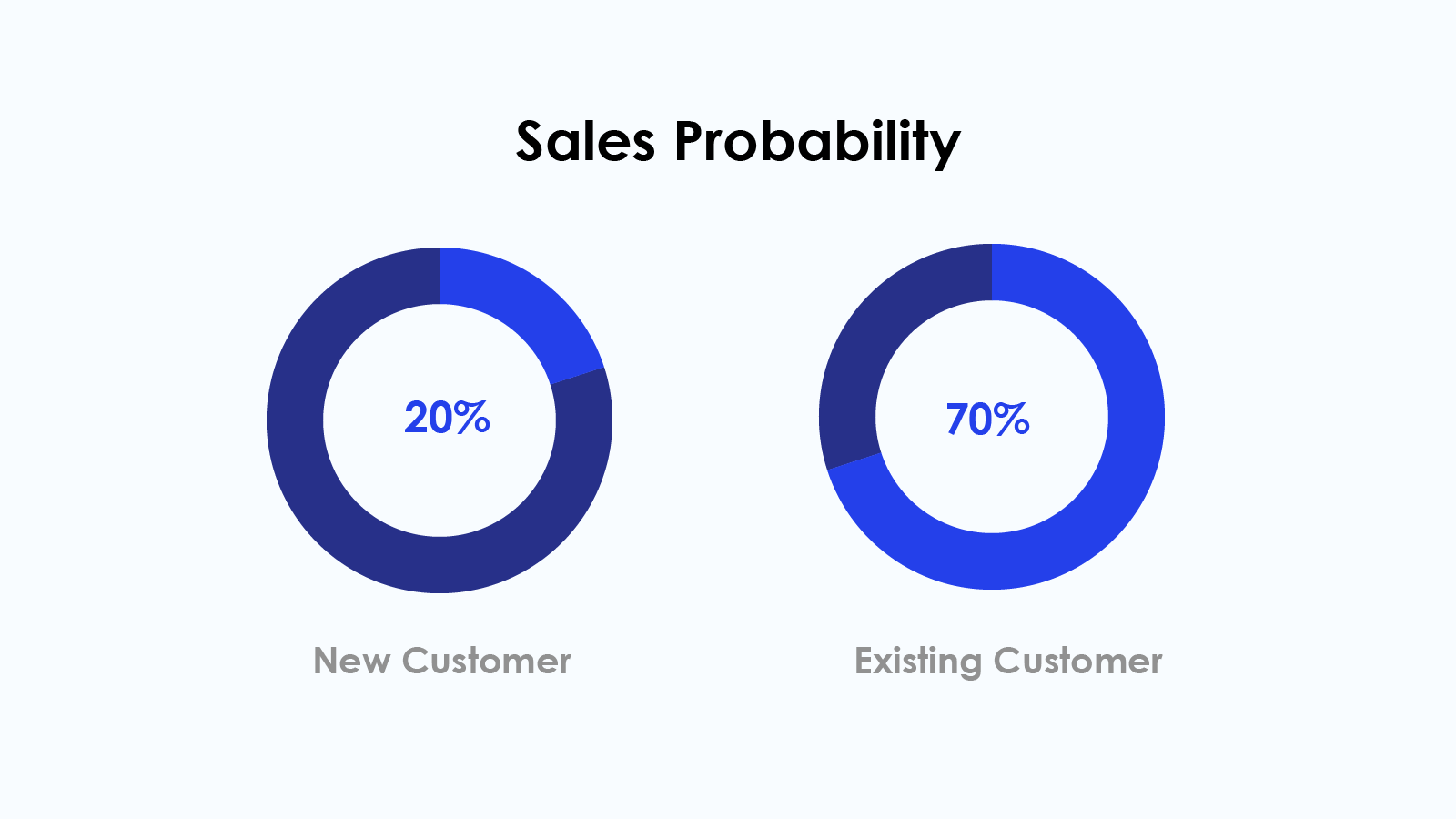
Because it’s easier to sell to existing customers, brands can achieve 30-40% of their revenue targets through upselling and cross-selling.
This presents an incredible growth opportunity.
So, it makes sense to market to your existing customers because:
- Acquiring new customers is 5 times more expensive than retaining them
- 5% increase in customer retention may lead to 25-95% higher profits
But, let’s be clear:
Do not discard your customer acquisition plan (that’s how you gain a market share).
What you need is the right balance.
A balance between acquisition and retention.
How do you achieve that balance successfully?
You do it through CRM marketing.
Just another buzzword? Not quite.
Read on to find out more.
What is CRM marketing?
CRM marketing refers to the marketing tactics to acquire customers and increase customer loyalty, retention, revenue, and lifetime value.
Instead of using separate software for sales and marketing, companies prefer CRM for:
- Analysing market demand/pain points
- Customer journey mapping
- Tracking lead activities
- Creating trigger-based campaigns
- Lead and customer segmentation
- Marketing automation and lead engagement
- Lead prioritization and scoring
- Reports and data analytics
You may have noticed that the above is based on a marketing perspective.
Sales teams also have several use cases for CRM software.
But the point is – by unifying lead and customer data in CRM, teams have better visibility into their market.
It becomes data-driven. No guesswork required!
It also simplifies building customer profiles as marketing teams know the lead attributes that convert, the campaigns that worked, and the number and types of touchpoints that led to conversion.
CRM is powerful. In many organizations, it’s business critical.
It’s no surprise that, by 2025, CRM software is set to generate more than $80 billion in sales.
Are you wondering how CRM marketing contributes to new revenue?
Let’s take a look at an example.
With CRM, you can keep track of your website visitors’ activities. If your newest lead has clicked on your ad about red mittens, your CRM will store this information.
In the future, you can send ads that market red mittens to your lead. Thus, helping you transform your lead to a customer with little work on your part.
In short, CRM helps you understand your leads’ specific interests. Your cold call will be a lot warmer with the help of your CRM information.
If it sounds easy, it’s because it is.
But not everyone is ready to adapt and digitally transform their business.
If traditional marketing works, why change?
As the saying goes… “If it ain’t broke, don’t fix it.”
Yet, traditional marketing has its fair share of challenges.
Especially when compared to CRM marketing.
Let’s take a closer look..
Challenges with traditional marketing
Traditionally, brands used newspapers, telemarketing, broadcasts, and more to reach a broader set of audience.
Today, with digital media, these are not as effective as before.
Traditional ways of marketing now present more challenges than benefits, some of which are:
- Traditional marketing results in 50% fewer consumer interactions than online marketing. We can reach our customers much faster when we use the internet and interact with them effortlessly.
- The biggest challenge with print ads is our inability to measure the ad’s reach. Sure incremental sales is a way to check the effectiveness of marketing campaigns, marketers still struggle to find the actual conversion source.
- “Sales” is the only factor that determines how effective your campaign was in traditional marketing. In CRM marketing, you have a number of metrics to measure the effectiveness. For e.g., new and repeat customers, renewals, upsells, cross-sells, etc.
- The next challenge we face is with traditional TV marketing. For many small businesses, TV ads can be costly if not completely out of reach. And these ads reach many people who do not need your product. At the same time, if not done strategically, your ads may not reach your target audience at all. For example, in 2020, the total time spent viewing traditional TV by 18-34-year-olds fell by 23.4%. Which means you won’t be reaching younger generations using television.
Simply put:
It’s high time to get over the traditional tactics.
In the past, US-based marketers used to spend between 7-10% of their company revenues for marketing. This number rose to 13.2% in February 2020.
Fast forward to 2021 and CMOs in the US claim that their digital spending has increased by 14.3% compared to the previous 12 months.
Now, what does it mean?
That it’s time to step up your marketing strategy.
Marketing needs to be more personalized and targeted.
Otherwise, you’ll keep on burning money and generate zero results.
So, what’s the solution?
CRM marketing.
How does CRM marketing compare to traditional marketing?
CRM Marketing Vs. Traditional Marketing
| CRM Marketing | Traditional Marketing | |
| Goals | To engage with buyers throughout their lifecycle. It includes customer acquisition, retention, cross-selling, and up-selling. | The goal is to acquire customers. |
| Medium | Digital and sometimes offline as well (events, and tradeshows). | Digital, radio, print ads, broadcast, telemarketing, events, and tradeshows. |
| Tracking conversions | Easy and accurate | Difficult to track actual conversion source. |
| Customer journey mapping | Marketers can track almost every possible touchpoint. | It’s difficult to track all customer interactions. |
| Audience segmentation | Marketers can segment customers based on location, interest, language, and more.It is even possible to reach out to a niche audience. | Generally, the focus is focus on a broader set of audience. |
| Cost | Highly cost effective.For e.g., you can retarget prospects who bought a product through Google Ads for $0.66 to $1.23 per click. | Very costly.For e.g., an ad in a magazine can cost upwards of $20,000, a billboard can cost $2,500/month, and a 30-second TV commercial on a small local station will cost $1,500 (excluding production costs) |
| Reporting | CRM marketing tools offers several options to measure the effectiveness of your marketing campaigns. You can track a range of KPIs to get granular details. | Traditional marketing is much harder to measure. As we do not have any tool that automatically analyzes and reports its progress. |
| Upcoming trends | CRM Marketing typically uses automation for its marketing processes. By 2023, the global marketing automation technology industry is set to reach $25.1 billion. | Marketers are steadily decreasing their budgets for traditional advertising. |
It’s clear that there’s a lot of reasons to switch to CRM marketing.
Getting started doesn’t have to be difficult, either…
3 Simple ways in which you can use CRM marketing
1. Segment audience
A CRM collects and stores information such as:
- Customer preferences- likes, dislikes, and attitude towards ads.
- Demographics- age, gender, household type, location, and so on.
- Purchasing habits- whether they are big spenders or practical buyers.
When you know your customers, you can segment them into different buckets.
For example, if you sell bicycles, you can segment your customers based on their age and gender.
Then, you can send specific campaigns or updates to each segment. Needless to say, your campaigns will be more relevant and targeted than a generic one.
I’ll give you one more example.
Steven Macdonald shared an experiment on the SuperOffice blog where he found that segmented email campaigns are 123% more effective in terms of open rate and 744% more effective in terms of CTR than non-segmented campaigns.
| Segmented email campaign | Non-segmented email campaign | |
| Open rate | 94% | 42% |
| CTR | 38% | 4.5% |
So, there’s a definite reason to segment all your campaigns from here on.
And a CRM software helps you do just that.
You can take it a step further by monitoring conversions. For example, instead of a generic overview, you can determine the best day and time to send your email campaigns based on your users and target group.
Here’s an example of how you can track email metrics in LeadSquared CRM.
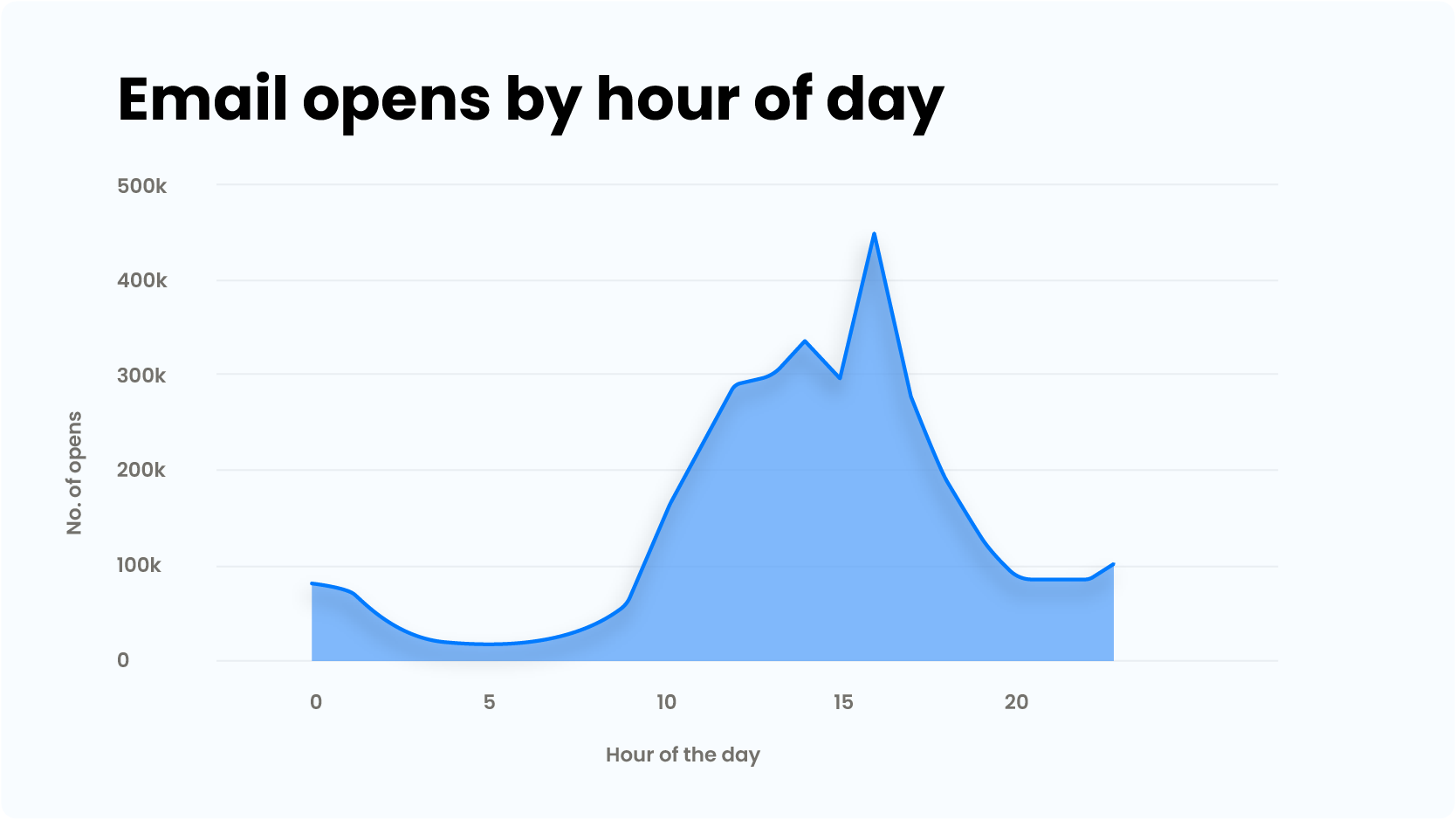
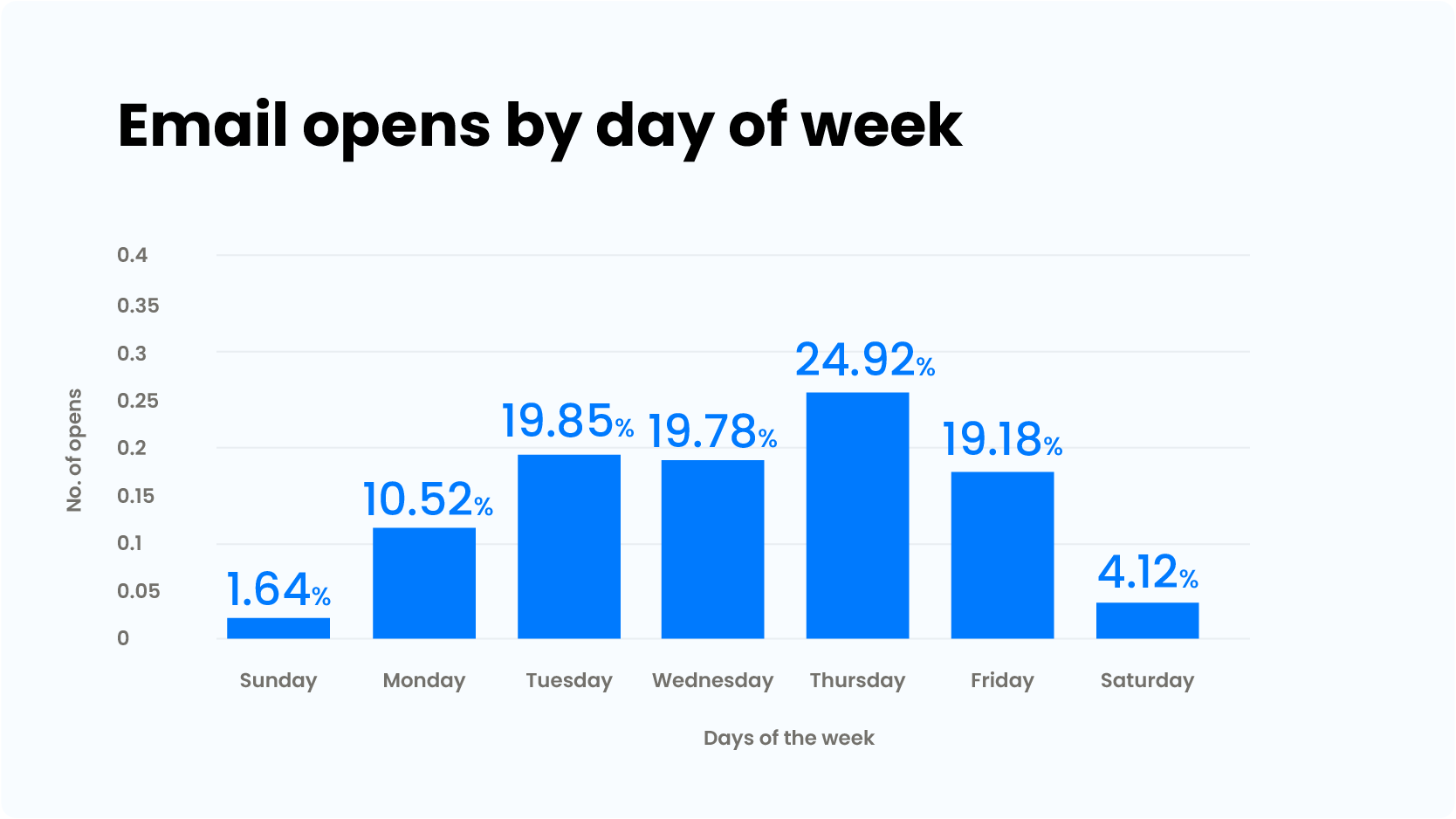
2. Personalize and automate marketing campaigns
How often do you send marketing campaigns to your leads?
Once in a week? Once in a month?
And how often do you update your audience list?
If you’re generating new leads every day, managing and nurturing them efficiently will determine how successful your campaigns will be.
Let’s say you collect leads for a week. Then you apply filters and segment them. And then finally pass them on to the email marketing software to run campaigns.
If this is what you’re doing right now, I must say, there’s a better way to run your campaigns.
Because, my friend, all these could be done automatically through CRM marketing.
Let me walk you through the lead journey in CRM on a high level.
- Capture leads
- Automatically segment them based on predefined attributes
- Add them to a nurturing sequence. Personalize the messaging.
- Track their interactions and transactions (purchase)
- Gather the insights and tune your future campaigns.
All these things happen automatically in CRM.
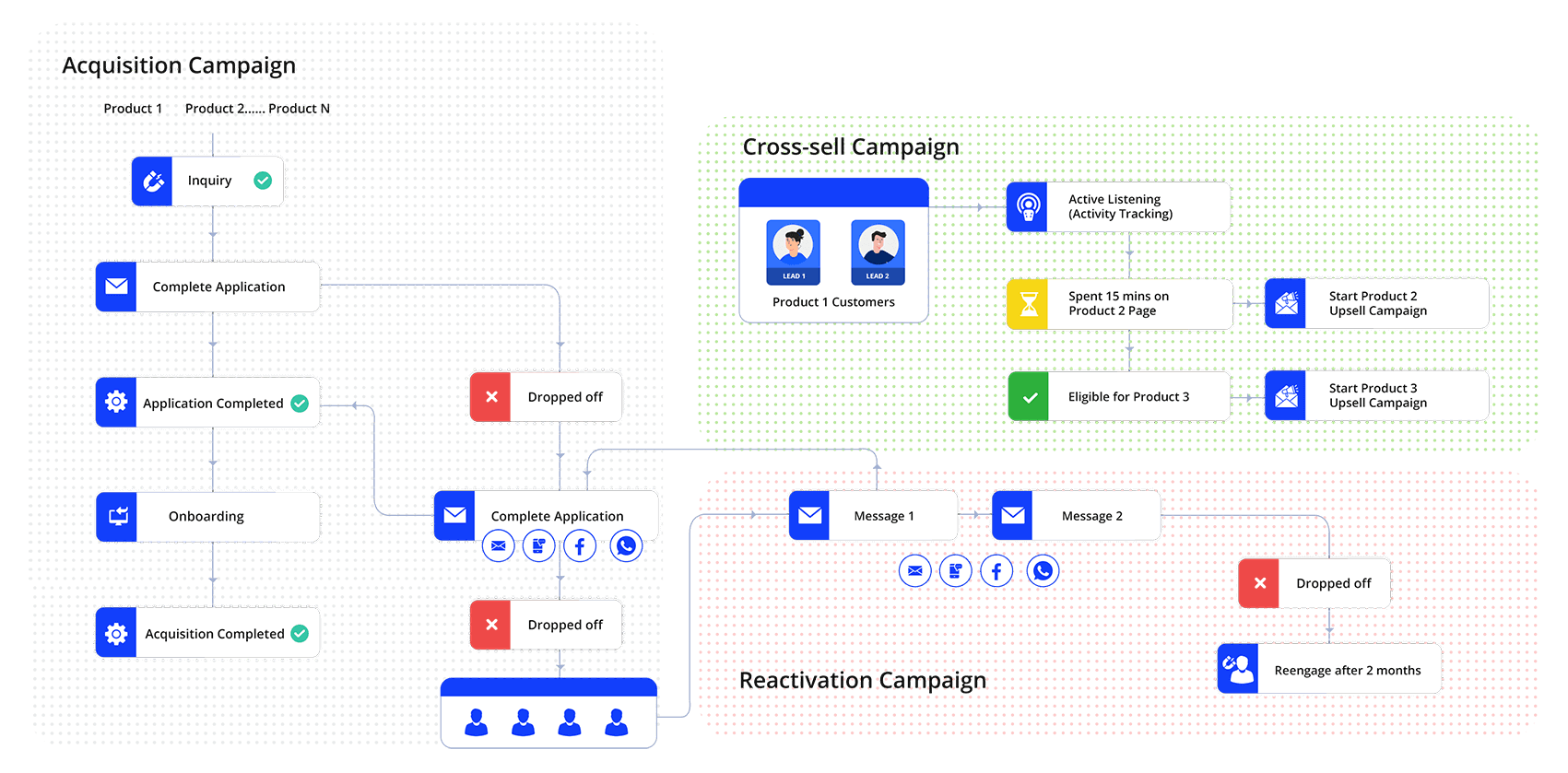
You can, of course, intervene. But CRM marketing helps you automate tasks that could have otherwise consumed a lot of your and your team’s bandwidth.
Now let’s talk about personalization in CRM marketing.
Dynamic Yield Research found that 88% of people prefer personalized emails. And it holds true for any marketing communication.
Won’t you like a brand more if they address you with your first name, instead of “Hey There”?
Now you may wonder, how can CRM help with personalization?
To be honest, there is no one way to personalize your message, but many.
You can personalize your campaigns based on:
- Audience
- Time of the year
- Current events
The CRM will automatically fill the first name with your customer’s name. Similarly, you can personalize other content based on the data you have. The text is personalized for every single recipient – as if you’re sending messages to them individually. Plus, you can send the message through WhatsApp, SMS, or email – the channel your buyers prefer.
You can track the open rates, click rates and purchases made through your campaigns by adding a tracking parameter to the link.
So, this is just one of the ways in which you can personalize your campaigns through CRM marketing.
No grunt work, just a personalized campaign sent to a specific segment of the audience.
3. Triggered campaigns
When you run a business, your interaction with people goes through a lifecycle consisting of multiple stages, from new subscribers to regular clients. Each lifecycle stage warrants a specific response, such as welcome emails, re-engagement emails, or milestone emails.
Triggered campaigns are very helpful here.
Instead of sending promotional campaigns to a bunch of people, you communicate when there’s an activity.
For example, when your customer checks on running shoes on your website, your CRM tracks that activity and initiates a trigger message.
Similarly, the triggers can be opening your emails, buying from you, visiting your website, or interacting with you on social media. Each of these actions will trigger a unique response to that customer.
You can also create triggers for a number of events, such as:
- Subscription renewals
- Birthdays
- Anniversaries
- Milestone achievement
Even better, you don’t have to do anything!
The CRM software takes care of audience segmentation, personalization, and trigger-based campaigns. Basically, CRM helps you a great deal with marketing automation.
How does CRM help with marketing automation?
Think about this.
What do you need for personalization?
Data, right?
Now, where do you find your customer data?
You’re right – in a CRM.
CRM that supports marketing automation is a boon for organizations.
It helps:
- Segment customers automatically
- Run omnichannel campaigns from the same platform
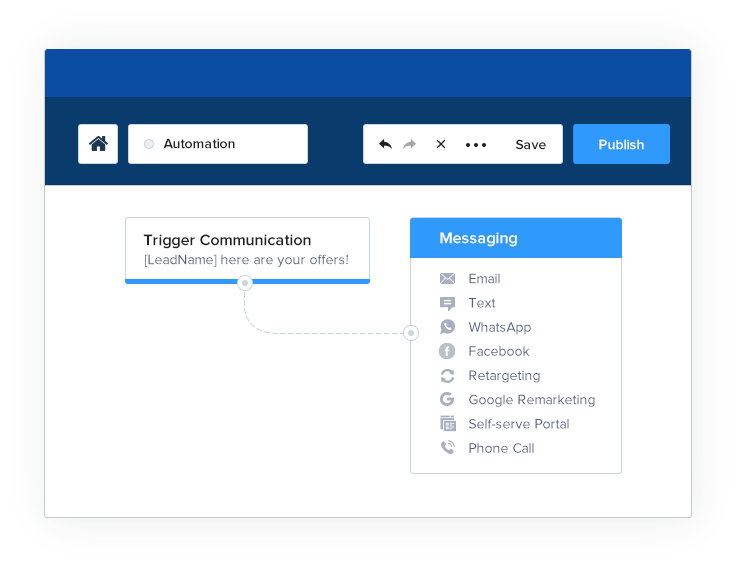
- Break through the departmental silos (If another team is sending a campaign to a list of customers, instead of postponing your campaign or sending multiple campaigns to the same set of customers back to back, you can suppress that list and still run your campaigns.)
- Makes customer information available to marketers
- Makes it easy to build customer profiles
- Save templates and reuse them
- Track conversions based on different parameters – location-wise, campaign-wise, etc.
- Derive actionable insights
Now it’s fair to ask about the software that helps achieve the above benefits.
Here’s our recommendation.
The best software for CRM marketing: LeadSquared
With LeadSquared, you can understand your prospects better and build lasting relationships.
Some of the features your marketing team will love are:
- Automatically capture leads. Reduce lead leakage to zero with landing pages, connectors, APIs, and more.
- Understand intent with 360-degree user profile, behavior, activity tracking, and more.
- Spot signals. Identify a user’s intent to buy with tracking and trigger engagement actions.
- Visualize user journeys. Use pre-build user behavior and engagement workflows for important actions, like a pricing page view.
- Measure performance. Get prescriptive insights across lead sources, engagement campaigns, user journeys, and more.
- Connect your systems. If you’re already using other software tools, seamlessly integrate them with LeadSquared. Think of LeadSquared as a single front-end for all your marketing, lead capture, engagement, and conversion activities.
Think of it this way:
The marketing automation and the ability to track leads in real-time as they’re engaging on your website can be of great advantage.
Sarah Holmes, Corporate Director of Admissions, Bellus Academy, California, says so.
Further, she adds:
“Since LeadSquared, we have noticed an increase in our conversion rates from around 15-17% to mid 20%. LeadSquared makes it so much easier to follow up with leads and makes sure no one gets lost in the process. The main addition has been the ability to build consistent enrollment journeys combining admissions, marketing and automation. That has brought a phenomenal change in the process and a reduction in our lead-to-enrollment time by 60%.”
Sarah Holmes, Corporate Director of Admissions, Bellus Academy, California, says so.
The takeaway
CRM marketing is the future.
Marketers have realized that there should be a balance between customer acquisition and retention. And CRM marketing is just the way to do that.
With CRM marketing you can not only improve your customer acquisition methods but also run triggered campaigns to initiate renewals, upsell and cross-sell. Thus, generating revenues from all directions.
If you wish to build long-lasting relationships with your customers, let LeadSquared help you in your pursuit. To see it in action,









